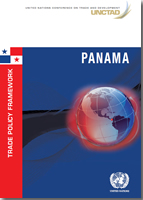
Panama has experienced high economic growth in the last decade, among the biggest worldwide. The pace has begun to decline but over the medium term the country is expected to continue to have the highest growth rate in the region.
The strengths of the Panamanian economy are linked with its privileged geographical position, which enables the Panama Canal and the interoceanic logistics cluster, its degree of openness and the diversification of its economic activities.
Panama shows a high level of competitiveness in sectors that are most exposed to international markets. Still, inequality remains relatively high in Panama. Different levels of productivity impact remuneration levels, with the salary in the primary sector amounting to less than half of the salary in industry and almost a third compared to the logistics sector.
According to the Government Strategic Plan 2015-2019, an important development challenge is to reduce the gap between growth, inclusion and territorial cohesion, with public policy focused on effectively influencing the dual dimensions of national development: competitiveness and social inclusion. The sectoral goals focus on activities with the potential to create new jobs or to strongly impact the population’s socio-economic conditions.
In this context, and at the request of the Ministry of Trade and Industry of Panama, this Trade Policy Framework review focuses on the agriculture, fisheries, agribusiness and industrial sectors.
International trade has the potential to positively impact lagged sectors and economic activities outside the interoceanic corridor. This requires a well-designed and coherent policy framework to maximise development gains from trade and investment opportunities.
Most notably, it relies on building supply and export capacity. Also for this reason, the Trade Policy Framework review focuses on the logistics sector, which is important in itself as well as an enabler of connections between Panamanian value added and foreign markets.
This review begins by identifying the main economic trends that provide the necessary context to the subsequent analyses and by establishing the general linkages between international trade and development objectives.
It then introduces the structure and patterns of international trade in Panama, detailing the specificities of export and re-export trends and of merchandise and services trade.
This is followed by sectoral reviews of the agriculture, fisheries, industrial and agribusiness and logistics services sectors. It concludes by consolidating findings and recommendations for each sector and for trade policy overall.



